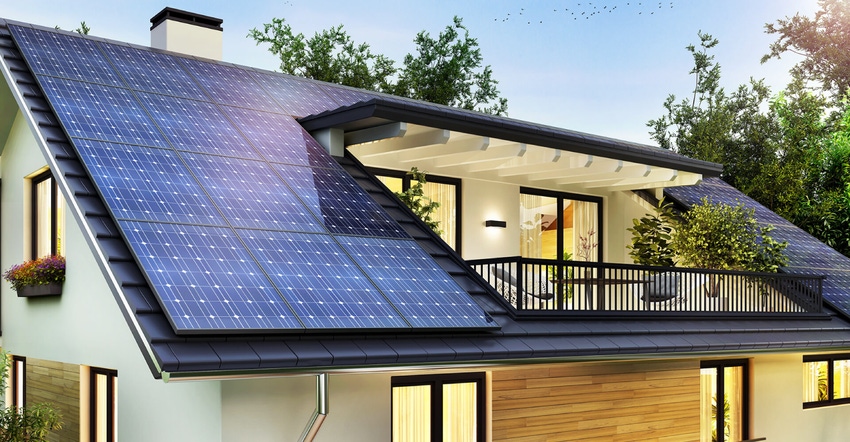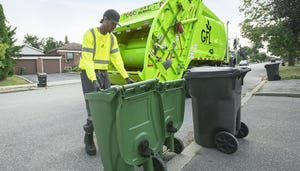Sustainability About The House: The Importance of Creating an Environmentally Friendly Property

Home usage and construction account for around 36 percent of global energy and as much as 39 percent of energy-related carbon emissions each year, according to the United Nations’ Environment Program. In the US, 40 percent of energy consumption comes from residential and commercial buildings.
2020 heralds a new decade of urgency in the battle against climate change. While much of the world is looking at ways in which carbon emissions can be lowered in terms of waste and agriculture, the impact of energy usage in houses and apartments worldwide be every bit as profound as throwing recyclables in the trash, or ultimately a landfill.
The new decade is destined to become the backdrop to the devastating effects of environmental damage as freak weather events become more persistent and more wildlife across the planet become vulnerable.
The perfect time to act on the threat of climate change has of course passed. But this doesn’t mean that it’s not too late for homeowners to act on limiting their energy consumption.
Naturally, consumerism has left many homeowners feeling that the path to carbon neutrality is a futile one, and both waste and energy are impossible to fully banish from households. But there are in fact, plenty of options available when it comes to limiting carbon footprints house by house. Many of these measures can be easy to implement and are readily available:
The Appeal of Reforestation
For homeowners who benefit from a healthy level of outdoor space, putting green areas to good use by planting new trees can be an effective way of absorbing greenhouse gases. An average-sized tree is capable of absorbing up to 22kg of CO2 over the space of 40 years.
Reforestation doesn’t simply have to apply to individuals and families who have garden space. It’s highly effective to add more plants in houses and apartments alike to absorb dangerous toxins and improve the standard of air quality about the home.
One of the most significant benefits behind homeowners adopting a more green-fingered approach towards fighting climate change is that it’s a relatively cost-effective fix and can bring aesthetic benefits to a living space in a way that some other approaches to lowering carbon emissions can’t replicate.
Solar Solutions
There are few more effective approaches to going carbon neutral than through the use of solar panels. This form of eco-friendly technology is easy to embrace and highly powerful in aiding homes to produce entirely clean energy.
In fact, the global solar power market has expanded exponentially in recent years and is expected to reach a value of as much as $422 billion by 2022, according to Statista.
(Image: Statista)
Solar panels can sometimes carry a great level of aesthetic appeal too, but they also represent a significant step in enabling homeowners to become self-sufficient as well as more sustainable - owing to the energy that panels are capable of drawing on and storing from the sun.
Furthermore, the financial benefits of adopting solar power are continually increasing. There are numerous governmental initiatives that are explicitly designed to support property owners looking to embrace the use of solar panels.
Solar energy doesn’t have to come in the form of unmissable panels. It’s possible to create passive solar constructs where walls, floors and windows are all designed to store solar power and distribute it in order to keep homes heated in winter months, or transversely cool them in the summer.
Many modern solar panels are created in a more discreet manner compared to their clunkier predecessors. This helps to pave the way for a less intrusive form of environmental awareness for homeowners who are unwilling to compromise on the character of their houses.
Reusable Rainwater
Rainwater is another effective way for homeowners to embrace more sustainability within their houses.
This can be achieved by positioning a tank or another form of water container underneath the downspout from their roof. This enables the collection of rainwater in a way that can automatically irrigate garden vegetation or plants around the house. It’s also possible to recycle the rainwater in a way that sets up a water feature.
It’s even possible to utilise a ‘garden roof’ which offers far better levels of insulation to inhabitants in the evenings while creating a cooling effect on rooms during daytime hours.
Sustainable Insulation
When it comes to insulation, there are few more effective and eco-friendly measures than triple-glazed windows. Not only do they help to mitigate outside noise, but they also work wonders in regulating room temperatures without the need for toxic materials.
Homeowners also have the somewhat more expensive option of installing a hydroponic greenhouse veranda onto the front of their homes.
Greenhouse verandas act as a great tool for capturing sunlight to keep indoors while ensuring that frosty climates are kept at bay during the winter months.
Indoor Climate Control
Geothermal pumps are an effective way of tapping into the varied temperatures in the air and underground to help to organically regulate homes without having to turn to the burning of harmful fossil fuels or widening the carbon footprint of homeowners.
It’s fair to say that a lot of home-based eco-friendliness is a mind-over-matter issue. The threats to our environment won’t be going away anytime soon, but luckily the technology available to homeowners and tenants is becoming increasingly powerful and more discreet in equal measure.
There are many solutions available in order to make homes more environmentally friendly, and more tools than ever to use to implement them. From purchasing more plants to creating a green space on house roofs, the ways of cutting household emissions are increasing exponentially.
About the Author(s)
You May Also Like




